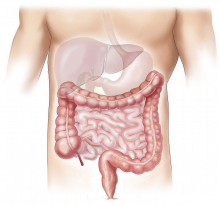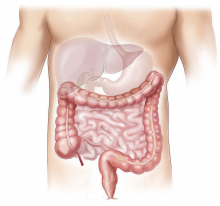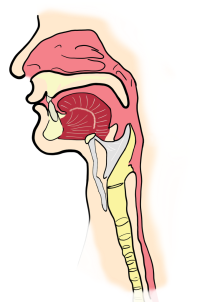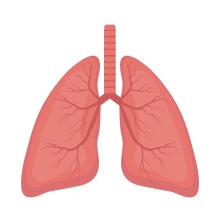חדשות המחקר

Ipsita Chatterjee, Dmitriy Getselter, Nasreen Ghanayem, Ram Harari, Liron Davis, Shai Bel, Evan Elliott: CHD8 regulates gut epithelial cell function and affects autism-related behaviors through the gut-brain axis (Transl Psychiatry .)
Autism is a neurodevelopmental disorder characterized by early-onset social behavioral deficits and repetitive behaviors. Chromodomain helicase DNA-binding protein (CHD8) is among the genes most strongly associated with autism. In addition to the core behavioral symptoms of autism, affected individuals frequently present with gastrointestinal symptoms that are also common among individuals harboring mutations in the gene encoding CHD8. However, little is known regarding the mechanisms whereby CHD8 affects gut function. In addition, it remains unknown whether gastrointestinal manifestations contribute to the behavioral phenotypes of autism. The current study found that mice haploinsufficient for the large isoform of Chd8 (Chd8L) exhibited increased intestinal permeability, transcriptomic dysregulation in gut epithelial cells, reduced tuft cell and goblet cell counts in the gut, and an overall increase in microbial load.

Littal Rubin, Yaniv Avraham, Adi Sharabi-Nov2, Tanous Shebly, David E Rothem: Acupuncture Effect on Analgesic Consumption and Cortisol Levels Following Total Knee Arthroplasty: A Randomized Controlled Trial (Med Acupunct .)
Pain following total knee arthroplasty (TKA) is common. Various modalities of treating orthopedic postoperative pain (POP) exist; however, the optimal management of POP remains unclear. The purpose of this study was to examine acupuncture's effect on postoperative analgesic consumption and cortisol levels in patients undergoing TKA.

Ala Aiob: Clinical Implication of PD-L1 Expression in Patients with Endometrial Cancer (Biomedicines . )
This study investigated PD-L1 expression in endometrial cancer, its links with prognostic factors, and survival outcomes in 232 patients.

Afif Nakhleh, Naim Shehadeh: Clinical Outcomes of Diabetic Ketoacidosis in Type 2 Diabetes Patients with and without SGLT2 Inhibitor Treatment: A Retrospective Study (Biomedicines .)
This study aimed to compare the clinical course and outcomes of DKA in T2DM patients who received treatment with SGLT2 inhibitors versus those who did not.

Implementation of French AmbUlatory Cesarean Section (FAUCS): Establishment of a Learning Curve and Short-term Outcomes (Isr Med Assoc J . )
The French AmbUlatory Cesarean Section (FAUCS) technique was introduced to the Galilee Medical Center in September 2021. FAUCS was performed electively for interested women who meet the criteria. Objectives: To evaluate the learning curve of senior surgeons performing FAUCS, the procedure short-term outcomes, and complications.
(Susana Mikhail Mustafa, Raneen Abu Shqara, Maya Frank Wolf, Oleg Shnaider, Sari Nahir Biderman, Limor Sharabi, Lior Lowenstein)
Fadi Hassan, Amir Khoury, Jamal Awad, Helana Jeries , Mohammad E Naffaa: A very rare cause of blue finger: A case-based review (J Scleroderma Relat Disord . )
Cryofibrinogen is an abnormal, cold-insoluble protein composed of a combination of fibrinogen, fibrin, and fibronectin. Cryofibrinogenemia can be essential (e.g. primary) or secondary to various conditions. While low levels of cryofibrinogen can be seen in asymptomatic healthy individuals without evidence of clinical features typical of cryofibrinogenemia, cryofibrinogenemia associated with clinical features is considered very rare. The clinical features of cryofibrinogenemia ranges from skin manifestations, including Raynaud's phenomenon and livedo reticularis, to more severe organ-threatening manifestations such as tissue ischemia and gangrene.
We report a case of a 48-year-old male who presented with blue finger and palpable purpura on his distal extremities.

Boris Fichtman, Amnon Harel: The magnified view: from ancient trinkets to single nuclear pore complexes (FEBS Lett . )
A journey from the earliest known use of lenses and magnifying glasses in ancient times, through the development of microscopes and towards modern electron microscopy techniques. The evolving technology and improved microscopes enabled the discovery of intracellular organelles, the nucleus and nuclear pore complexes (NPCs). Current advances have led to composite three-dimensional models showing NPC structure in unprecedented detail but relying on the averaging of many images. A complementary approach is field emission scanning electron microscopy providing topographic surface images that are easily and intuitively interpreted by our brain. Recent advances in this technique have made it possible to expose nuclei from human cells and to focus on individual NPCs and their architectural features.

Kirill F Vasilchenko: Current status, challenges and future prospects in computational psychiatry: a narrative review (Consort Psychiatr .)
Computational psychiatry is an area of scientific knowledge which lies at the intersection of neuroscience, psychiatry, and computer science. It employs mathematical models and computational simulations to shed light on the complexities inherent to mental disorders. Aim: The aim of this narrative review is to offer insight into the current landscape of computational psychiatry, to discuss its significant challenges, as well as the potential opportunities for the fields growth.

Mervyn S Jaswon: For Whom the bugs toll: do uTLR4 levels have a role in screening for urinary tract infection? (Pediatr Nephrol .)
The diagnosis and management of urinary tract infection (UTI) in young children continues to stimulate discussion and research. And rightly so! UTI is not only an important cause of bacterial infection in children, which may be associated with renal tract abnormalities and is a risk factor for renal scarring and hypertension, but also because of the morbidity associated with the infection. It is thus imperative to not only make a correct diagnosis both to initiate appropriate and timely treatment, plus further investigation where indicated, but to also avoid unnecessary treatment and investigation.

Sondra Turjeman, Omry Koren: Metabolic inputs in the probiotic bacterium Lacticaseibacillus rhamnosus contribute to cell-wall remodeling and increased fitness (NPJ Biofilms Microbiomes .)
Lacticaseibacillus rhamnosus GG (LGG) is a Gram-positive beneficial bacterium that resides in the human intestinal tract and belongs to the family of lactic acid bacteria (LAB). This bacterium is a widely used probiotic and was suggested to provide numerous benefits for human health. However, as in most LAB strains, the molecular mechanisms that mediate the competitiveness of probiotics under different diets remain unknown. Fermentation is a fundamental process in LAB, allowing the oxidation of simple carbohydrates (e.g., glucose, mannose) for energy production under oxygen limitation, as in the human gut. Our results indicate that fermentation reshapes the metabolome, volatilome, and proteome architecture of LGG.

The Role of Hepatobiliary Scintigraphy as the Initial Investigative Modality for Significant Bile Leak following Laparoscopic Cholecystectomy (Dig Surg .)
Currently, the rate of bile duct injury and leak following laparoscopic cholecystectomy (LC) is still higher than for open surgery. Diverse investigative algorithms were suggested for bile leak, shifting from hepatobiliary scintigraphy (HBS) toward invasive and more sophisticated means. We aimed to analyze the use of biliary scan as the initial modality to investigate significant bile leak in the drain following LC, attempting to avoid potential unnecessary invasive means when the scan demonstrate fair passage of nuclear substance to the intestine, without leak.

Ohad Ronen: Review of Outcomes after Salvage Surgery for Recurrent Squamous Cell Carcinoma of the Head and Neck (Cancers (Basel) .)
Surgery with adjuvant chemoradiotherapy or chemoradiotherapy is the mainstay in treatment for advanced stage head and neck squamous cell carcinoma; however, locoregional recurrences are frequent. Salvage surgery could be proposed in selected patients to improve local control, disease-free, and overall survival. Factors for improved disease-free and overall survival in patients treated with salvage surgery include age, tumor location, the initial T stage, HPV status, resection margins, and the time elapsing from the initial treatment. Clinical trials with adjuvant therapies have shown promise after salvage surgery in terms of tolerance and response, but clinical guidelines for using these adjuvant treatments are currently lacking. The aim of this review is to present current knowledge concerning the incidence and management of recurrent head and neck squamous cell carcinoma and current data concerning survival and morbidity after salvage surgery

Ohad Ronen: Progress and emerging strategies to preserve function in the treatment of sinonasal cancer (Head Neck . )
The sinonasal structures and their adjacent organs host several functions including vision, olfaction, nasal respiration and filtration, secretory immunity, facial expression, articulation, and oral deglutition. We reviewed the current evidence supporting functional preservation in sinonasal cancer treatment.

Husein Dabbah: Pediatric negative pressure pulmonary edema: Case series and review of the literature (Pediatr Pulmonol . )
Negative pressure pulmonary edema (NPPE) is a potentially life-threatening complication that develops rapidly following acute upper airway obstruction. The condition is rare, dramatic but resolves quickly. Prompt recognition and appropriate supportive treatment may prevent unnecessary investigations and iatrogenic complications.

Association between BNT162b2 vaccination and health-related quality of life up to 18 months post-SARS-CoV-2 infection in Israel (Sci Rep . )
We determined whether COVID-19 vaccination was associated with Quality of Life (QoL) changes among individuals previously infected with SARS-CoV-2 in Israel.
(Paul Kuodi, Yanay Gorelik, Hiba Zayyad, Ofir Wertheim, Karine Beiruti Wiegler, Kamal Abu Jabal, Amiel A Dror, Jelte Elsinga, Saleh Nazzal, Daniel Glikman, Michael Edelstein)




